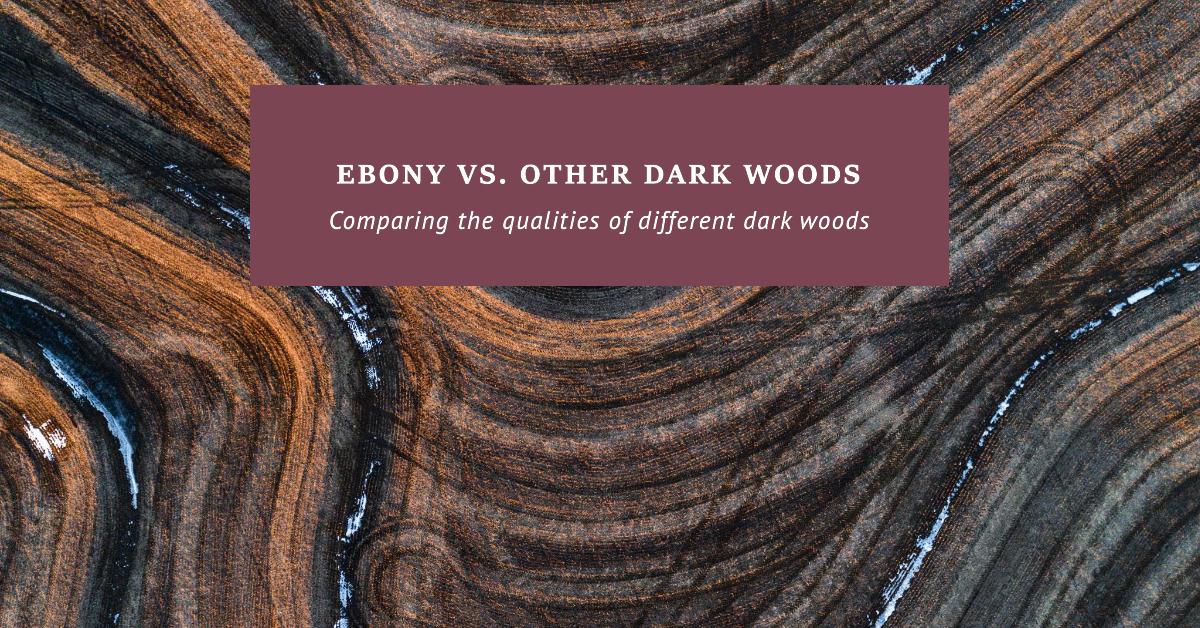When it comes to dark woods types, few are as revered and sought after as ebony. Renowned for its rich color, fine texture, and luxurious appearance, ebony has been prized for centuries in fine woodworking, musical instruments, and decorative arts. However, there are other dark woods on the market that offer similar aesthetics and properties. In this article, we’ll compare ebony with other dark woods, exploring their characteristics, sustainability, and suitability for various applications.
Ebony
Characteristics: Ebony is known for its deep, almost black color, which is evenly distributed throughout the wood. It has a fine texture and a smooth, polished finish that gives it a lustrous appearance. Ebony wood is prized for its density and durability, making it ideal for high-end furniture, cabinetry, musical instruments (such as piano keys and fingerboards), and ornamental turning.
Sustainability: Ebony trees are slow-growing and primarily found in tropical regions of Africa, Asia, and the Americas. Due to overharvesting and habitat loss, some species of ebony are endangered or threatened. Sustainable harvesting practices and reforestation efforts are essential for ensuring the long-term viability of ebony as a natural resource.
Suitability: Ebony’s dense, hard nature makes it well-suited for applications where durability and stability are paramount. Its rich color and fine texture lend elegance and sophistication to furniture, musical instruments, and decorative accents. However, its high density can make it challenging to work with, requiring sharp tools and careful craftsmanship.
Other Dark Woods
1. Walnut:
Characteristics: Walnut is prized for its deep, chocolate-brown color and prominent grain patterns. It has a warm, inviting appearance and a natural luster that enhances its beauty. Walnut is commonly used in furniture, flooring, cabinetry, and decorative veneers.
Sustainability: Walnut trees are native to North America and Europe and are cultivated in sustainably managed forests. While walnut is not as dense or hard as ebony, it is still considered a durable and versatile wood species with good dimensional stability.
Suitability: Walnut is valued for its workability, allowing for easy shaping, carving, and finishing. It is a popular choice for furniture making, as well as architectural millwork and interior trim.
2. Mahogany:
Characteristics: Mahogany is known for its reddish-brown color, straight grain, and moderate to high luster. It has a warm, inviting appearance and a smooth, satiny texture. Mahogany is prized for its durability, stability, and ease of workability.
Sustainability: Genuine mahogany (Swietenia spp.) is native to tropical regions of the Americas and is listed as a vulnerable species due to overexploitation. Sustainable forestry practices and plantation cultivation are essential for preserving mahogany forests and ensuring a sustainable supply of this valuable wood.
Suitability: Mahogany is versatile and suitable for a wide range of applications, including furniture, cabinetry, boat building, and architectural millwork. It is valued for its beauty, stability, and resistance to warping and rot.
Conclusion
While ebony remains the epitome of luxury and elegance in the world of dark woods, other species such as walnut and mahogany offer comparable beauty, durability, and versatility. When choosing between ebony and other dark woods, considerations such as sustainability, workability, and cost should be taken into account. Ultimately, the choice depends on the specific requirements of the project and the desired aesthetic outcome. By making informed decisions and supporting sustainable practices, woodworkers and consumers can enjoy the beauty of dark woods for generations to come.





